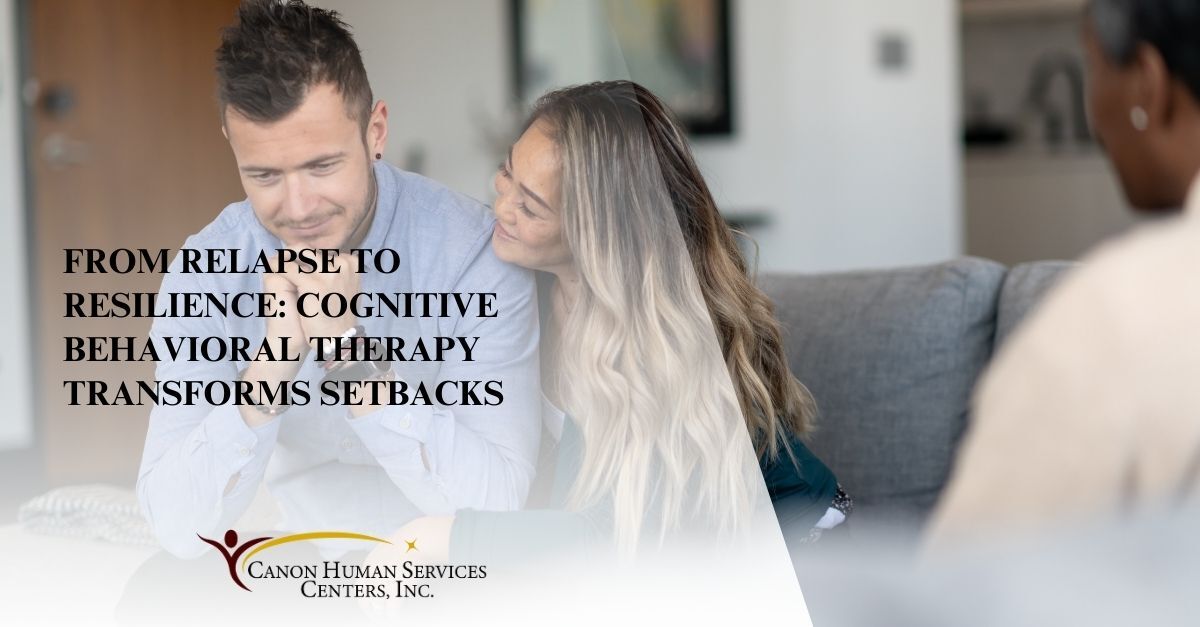Recovery from addiction, mental health challenges, or behavioral issues is rarely a straight line. Most people expect setbacks, yet when they occur, the emotional weight can feel crushing. The traditional view of relapse as “failure” creates shame, guilt, and often leads to giving up entirely. But what if there was a different way to understand these moments? Cognitive behavioral therapy framework (CBT) offers a revolutionary perspective: relapse isn’t failure—it’s data. This reframe fundamentally changes how we approach setbacks in recovery and personal growth. Rather than viewing a slip as evidence that change is impossible, CBT teaches us to examine these moments as valuable information about our triggers, coping strategies, and areas that need additional support.

This shift from judgment to curiosity can mean the difference between spiraling deeper into old patterns and building genuine, lasting resilience. When we learn to see setbacks as learning opportunities, we develop the tools to bounce back stronger and more prepared for future challenges.
Understanding Relapse Through a CBT Lens
CBT operates on a simple but powerful premise: our thoughts, feelings, and behaviors are interconnected. When someone experiences a relapse, traditional approaches often focus on the behavior itself—the drinking, the panic attack, or the self-harm incident. CBT takes a broader view, examining the entire cycle that led to that moment.
A relapse becomes a case study rather than a catastrophe. What thoughts preceded the behavior? What emotions were present? What environmental factors contributed? This analysis transforms a moment of perceived weakness into a roadmap for future prevention.
The data-driven approach of cognitive behavioral therapy removes moral judgment from the equation. Instead of asking “Why did I fail?” the question becomes “What can I learn from this experience?” This subtle shift in language creates space for honest reflection without the paralyzing weight of shame.
Mental health professionals who use CBT approaches understand that setbacks are often an inevitable part of the change process. The brain doesn’t rewire overnight, and new coping mechanisms take time to become automatic responses. Each relapse provides concrete information about which strategies are working and which need refinement.
The Science of Setbacks as Learning Tools
Research consistently shows that people who experience setbacks but continue working toward their goals often achieve better long-term outcomes than those who never face challenges. This phenomenon, known as post-traumatic growth, demonstrates the brain’s remarkable ability to adapt and strengthen through adversity.
The Cognitive behavioral therapy framework leverages this natural capacity for growth by helping individuals develop meta-cognitive awareness—the ability to think about thinking. When someone can step back and observe their own mental processes during a setback, they gain valuable insights into their patterns and triggers.
The prefrontal cortex, responsible for executive decision-making, becomes stronger through practice. Each time someone uses CBT techniques to analyze a setback rather than react emotionally, they’re literally building neural pathways that support better decision-making in the future.
Studies on addiction recovery show that individuals who view lapses as learning opportunities have significantly lower rates of full relapse compared to those who interpret setbacks as personal failures. The difference lies not in the occurrence of setbacks, but in the meaning assigned to them.
Practical CBT Techniques for Reframing Setbacks
Thought Record Analysis
One of the most powerful tools in cognitive behavioral therapy framework is the thought record. After a setback, individuals work through a structured analysis of the situation. They identify the specific thoughts that occurred before, during, and after the incident. Often, catastrophic thinking patterns emerge: “I’m never going to get better,” “I’m weak,” or “I might as well give up.”
The next step involves examining the evidence for and against these thoughts. Was the setback really evidence of permanent failure, or was it one moment in a longer journey? This process helps separate facts from interpretations, creating space for more balanced perspectives.
Behavioral Chain Analysis
This technique involves mapping out the entire sequence of events leading to a setback. Start from 24 hours before the incident and work forward, identifying each decision point, emotional state, and environmental factor. This detailed analysis often reveals surprising patterns and multiple intervention points.
For example, someone might discover that setbacks consistently follow poor sleep, social isolation, or specific stressful situations. Armed with this information, they can develop targeted prevention strategies rather than hoping willpower will be enough next time.
The Scientist Mindset
CBT encourages adopting the mindset of a curious scientist rather than a harsh judge. Scientists expect experiments to sometimes fail—that’s how discoveries are made. When a hypothesis doesn’t work out, they don’t abandon science; they gather data and try a different approach.
Applying this mindset to recovery means approaching setbacks with curiosity: What conditions led to this outcome? What variables can be changed for next time? What did work well in this situation, even if the overall outcome wasn’t ideal?
Building Resilience Through Pattern Recognition
The real power of viewing setbacks as data emerges over time through pattern recognition. Each analyzed setback adds to a growing database of personal insights. Common themes begin to emerge: certain emotions that signal vulnerability, specific situations that increase risk, or particular thought patterns that lead to problematic behaviors.
This pattern recognition enables proactive rather than reactive responses. Instead of waiting for the next crisis, individuals can recognize early warning signs and implement coping strategies before reaching a breaking point.
The Cognitive behavioral therapy framework teaches that resilience isn’t about avoiding all setbacks—it’s about developing the skills to navigate them effectively. Each successfully analyzed setback builds confidence in one’s ability to handle future challenges.
The process also helps individuals recognize their strengths and resources. Even in moments of relapse, there are usually elements that went well: reaching out for support, limiting the severity of the setback, or bouncing back more quickly than in the past. Acknowledging these positive elements builds a more complete and encouraging narrative.
Creating a Personal Setback Protocol
One practical application of the CBT approach is developing a personalized protocol for handling setbacks. This protocol should be created during stable periods when clear thinking is possible, not in the midst of a crisis.
The protocol might include immediate harm reduction strategies, specific people to contact for support, and a structured process for analyzing what happened. Having a plan in place reduces the likelihood that shame and panic will drive decision-making during vulnerable moments.
Regular review and updating of this protocol ensures it remains relevant as individuals grow and change. What worked in early recovery might need adjustment as someone develops new skills and faces different challenges.
Professional Support and CBT Approaches
While self-analysis is valuable, working with a mental health professional trained in cognitive behavioral therapy can accelerate the learning process. Trained therapists can spot patterns that individuals might miss and provide tools for more effective analysis.
At Canon Human Services, treatment approaches include cognitive behavioral therapy alongside other evidence-based methods like dialectical behavioral therapy and rational emotive behavioral therapy. This comprehensive approach ensures that individuals have access to multiple frameworks for understanding and learning from setbacks.
Professional support also provides accountability and encouragement during the analysis process. It’s natural to want to avoid examining painful experiences, but a skilled therapist can guide individuals through this process with compassion and expertise.
Transforming Your Relationship with Setbacks
The journey from viewing relapse as failure to seeing it as valuable data represents a fundamental shift in self-relationship. This transformation doesn’t happen overnight, but each time someone chooses curiosity over self-condemnation, they strengthen their capacity for resilience.
Remember that learning from setbacks is itself a skill that improves with practice. The first few attempts at analysis might feel clunky or superficial, but persistence pays off. Over time, the process becomes more natural and the insights more profound.
Cognitive behavioral therapy offers hope not by promising a life without challenges, but by providing tools to transform those challenges into stepping stones toward growth. Every setback becomes an opportunity to better understand yourself and refine your approach to lasting change.
If you’re ready to explore how CBT can help you build resilience and learn from life’s inevitable setbacks, consider reaching out to a qualified mental health professional. The journey from relapse to resilience is one you don’t have to walk alone.

